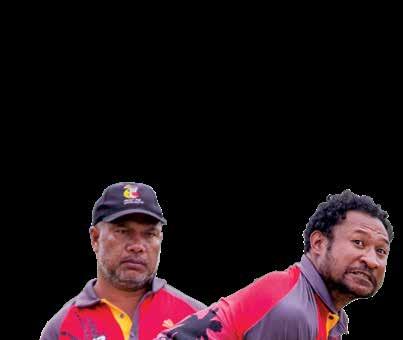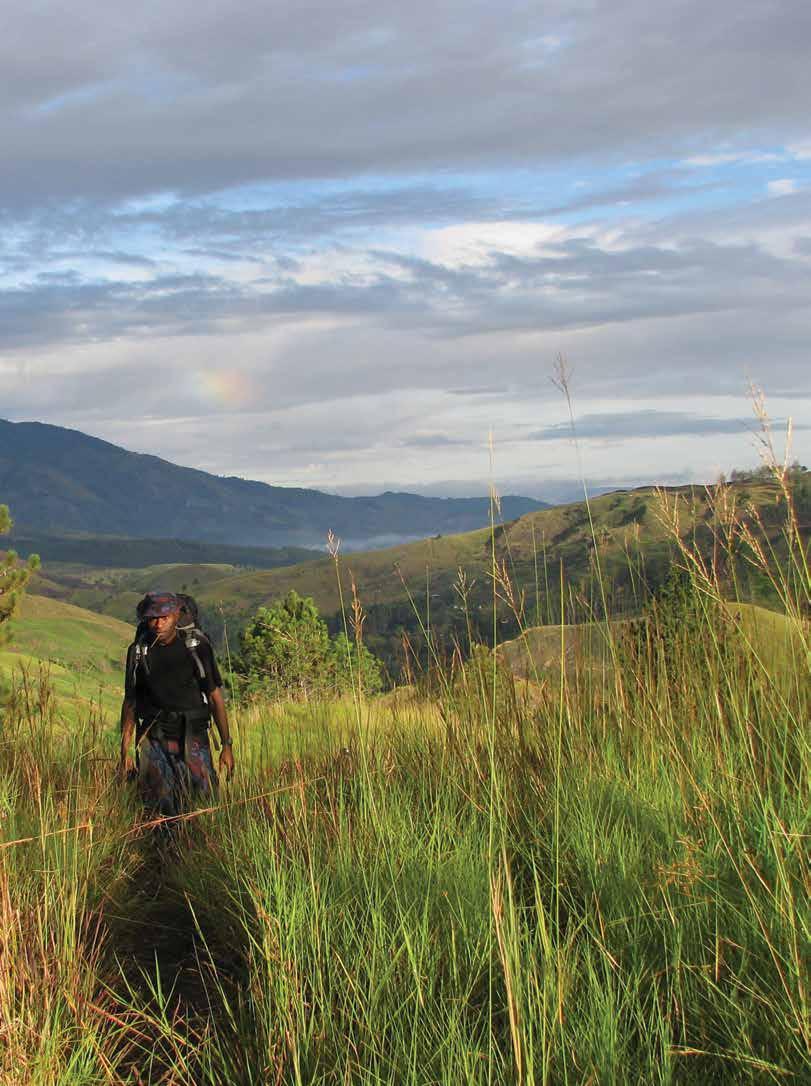
5 minute read
Back on Track
Escape
BACK ON TRACK
BY MIKE BUTLER | PHOTOGRAPHS: OUR SPIRIT ADVENTURES
Step off a road deep in the interior of Morobe Province, disappear from the rest of the world down a rugged track, reappear five days later rafting down a fast river to a pristine beach a fitter, gutsier and somehow better version of yourself, and you’ve done the Black Cat Track.
After years of being closed, the Black Cat Track is ready to re-open.
There were plans to take commercial trekkers this year, but visitors have been stopped in their tracks because of COVID-19 travel restrictions. The Black Cat is the ‘other’ track to Kokoda that saw fierce fighting between Pacific superpowers during World War 2. It saw more fighting and more men die on it, but it is hardly known compared to Kokoda.
While Kokoda is an Australian-only affair, the Black Cat has greater significance for Papua New Guinea because this is where this country’s people came together to fight the Japanese.

The Black Cat Track, ready to take visitors again.

Papuans preparing for battle on the Black Cat Track during World War 2. Below: Trek leader Aidan Grimes.

It saw the largest numbers of the New Guinea Volunteer Rifles and the Papuan Infantry Battalion fight, as well as American GIs alongside the Australians, to save PNG from being overrun.
Aidan Grimes (ourspirit.com.au), one of the leaders of Kokoda’s trekking industry, had been hoping that 2020 would be the year the Black Cat could start stepping out of its obscurity.
This gruelling 58-kilometre hike has the potential to not only attract Australians to PNG but also Americans and, perhaps more importantly, PNG people paying their respects to a place that represents the defence of the nation.
“PNG people died up there along with more Australians than on the Kokoda Trail and their sacrifices, heroics and mateship should be known while it’s still in living memories,” says Grimes, the 54-year-old Irishman who came to PNG in 1994 and now is one of the country’s most prominent trek leaders. (He’s done Kokoda 125 times.)
“There are still so many unaccounted soldiers up there,” Grimes says, adding this is where the PNG’s fighting spirit and strength in unity were forged.
For a country still looking for the foundations of a national identity and its place in a fast-changing world, the lessons that the Black Cat might represent to PNG’s people could be even more valuable than overseas tourist dollars.
Grimes’ plan to put the Black Cat back on the map is simple: “Take people down it, tell them the stories exactly where they happened, help them face the challenges of the track, give them an experience you can’t get anywhere else and it will sell itself just like Kokoda did to Australians.”
Grimes trekked the Black Cat soon after Kokoda and – because of the profusion of relics, stories and the harder physical challenges –he started taking expeditions down what was always pegged as the ‘next-level Kokoda’. The last time that happened was in 2013 when he brought now Australian Prime Minister Scott Morrison to the track.
A few months later, there was an attack on a trekking company new to the track that left three porters killed.
Seven years on, Grimes had plans to take around 45 paying trekkers along it … until COVID-19 struck. They would have been the first commercial trekkers since 2013.
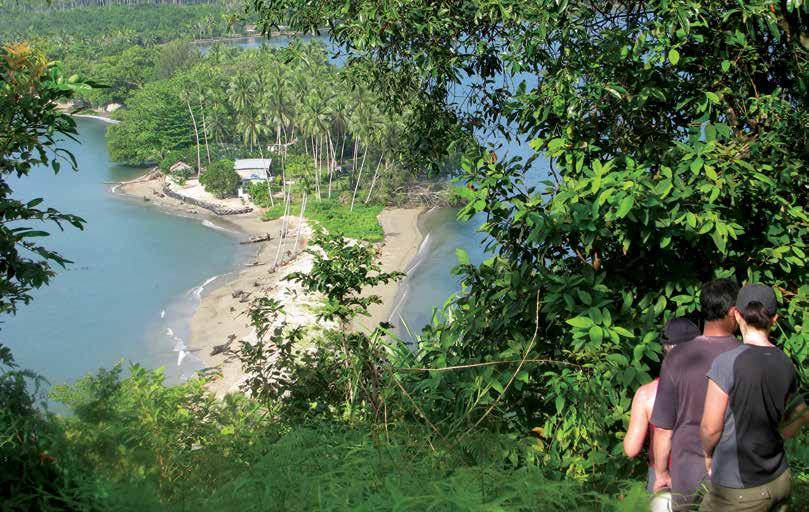
The Black Cat Track ends at Salamaua Isthmus, near Lae.
“The landowners were missing out on the benefits of bringing people down it and it’s that wild up there you absolutely have to respect the traditional laws,” he says, explaining he’s kept walking it himself each year since, protected by his relationships along it, listening to the stories, getting shown more battle sites and showing the landowners how trekking can benefit all the communities.
“They’re ready to welcome people again right along its length with all the type of hospitality this country does best,” he says.
Grimes says tourism operators have met in Lae since the COVID-19 outbreak, agreeing to continue to work together to develop the region’s tourism.
He says Black Cat tourism has consolidated significantly with the Morobe Government investing in it. “ We are poised to be part of the tourism bubble when travel to PNG is allowed again.”

One of the landowners along the track.
Grimes has done the Black Cat 28 times and was nationally recognised last year for his work with Kokoda’s people with the first Queen’s Diamond Jubilee Medal to be awarded to a foreigner.
Having been at the ‘birth’ of Kokoda in 2000 when only about 50 trekkers walked along it, Grimes witnessed numbers explode to more than 5500 in 2008.
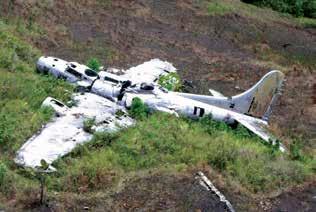
A crashed Flying Fortress is one of the war relics along the track.
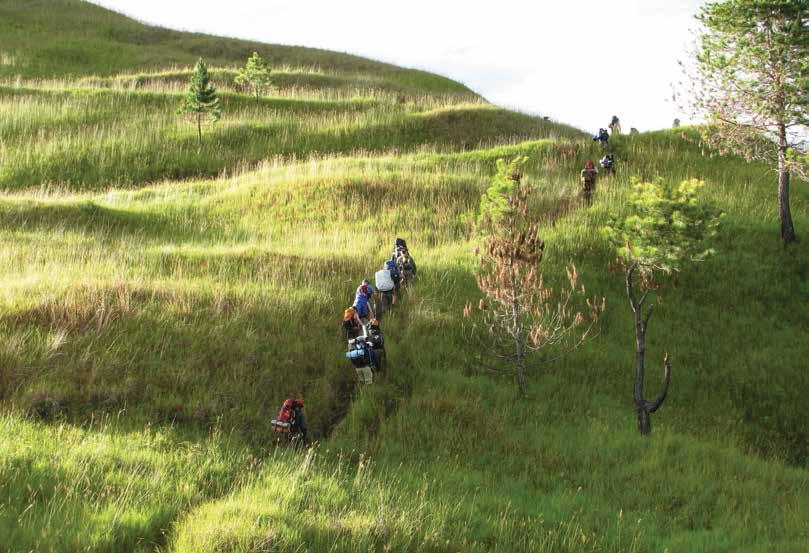
Stepping up on a hilly section of the 58-kilometre Black Cat Track.
He saw Kokoda’s serenity swamped with conga lines of cowboy operators, exploiting local people and creating conflict. His response was to help set up the Kokoda (operators) Ethics Committee, which advocates for a better go for PNG people and a higher standard of guides.
I was one of those 50 who did Kokoda in 2000 and will never forget the effect of the stories my guide Charlie Lynn told my group of 12 trekkers. I did a portion of the Black Cat a couple of years ago and I saw enough to know that it has the same appeal as Kokoda, if not more.
I remember I climbed the wing of the Flying Fortress, walked through its fuselage and sat in the pilot’s seat wondering what the hell it must have been like landing this aluminium beast in mountains crawling with Japanese soldiers wanting to kill you.
While I truly loved Kokoda, the Black Cat also has its own stories of heroism, like Digger Leslie ‘Bull’ Allen, who carried 12 wounded GIs to safety through a Japanese machine gun attack, the GIs saving Aussies, and the Papuan people saving the skins of everyone in a shoulder-to-shoulder defence as the Japanese attacked.
CAN YOU DO IT? One popular travel guide says the Black Cat Track is “suitable only for masochists and Israeli paratroopers”. Guide Aidan Grimes says this is ‘bull’. With a bit of preparation, he says, it is achievable by the average person. Just be prepared to walk at least eight hours a day along ridges and down ravines, crossing rivers and swamps, and for a lot of sliding down hills on your bum.
WHAT IT’S LIKE. The Black Cat Track is 58 kilometres between Wau and Salamaua in Morobe Province. It is home to many language and cultural groups, as well as wildlife including tree kangaroos, cassowaries and birds of paradise. The terrain includes valleys, rivers, jungle and kunai grass.




